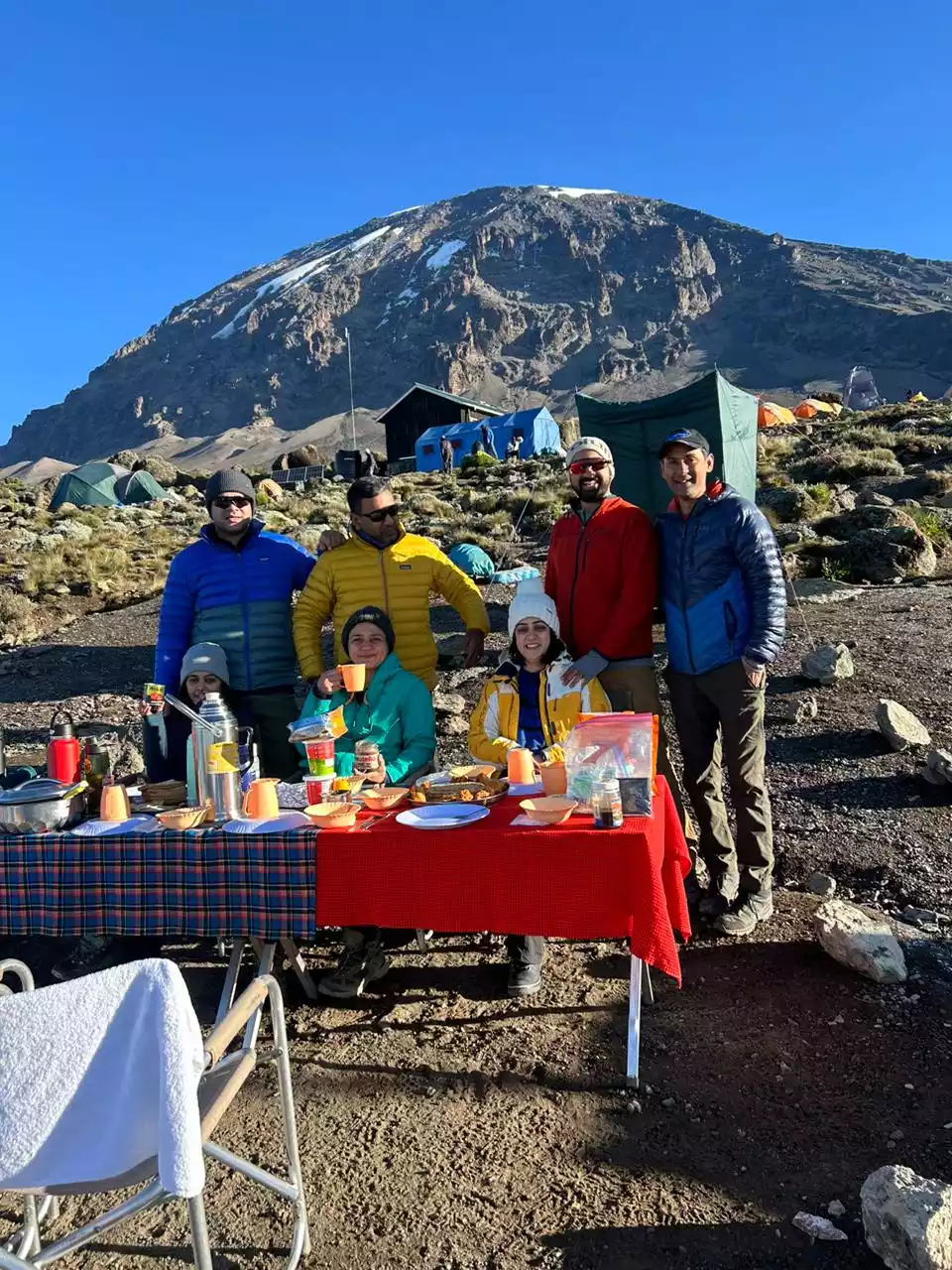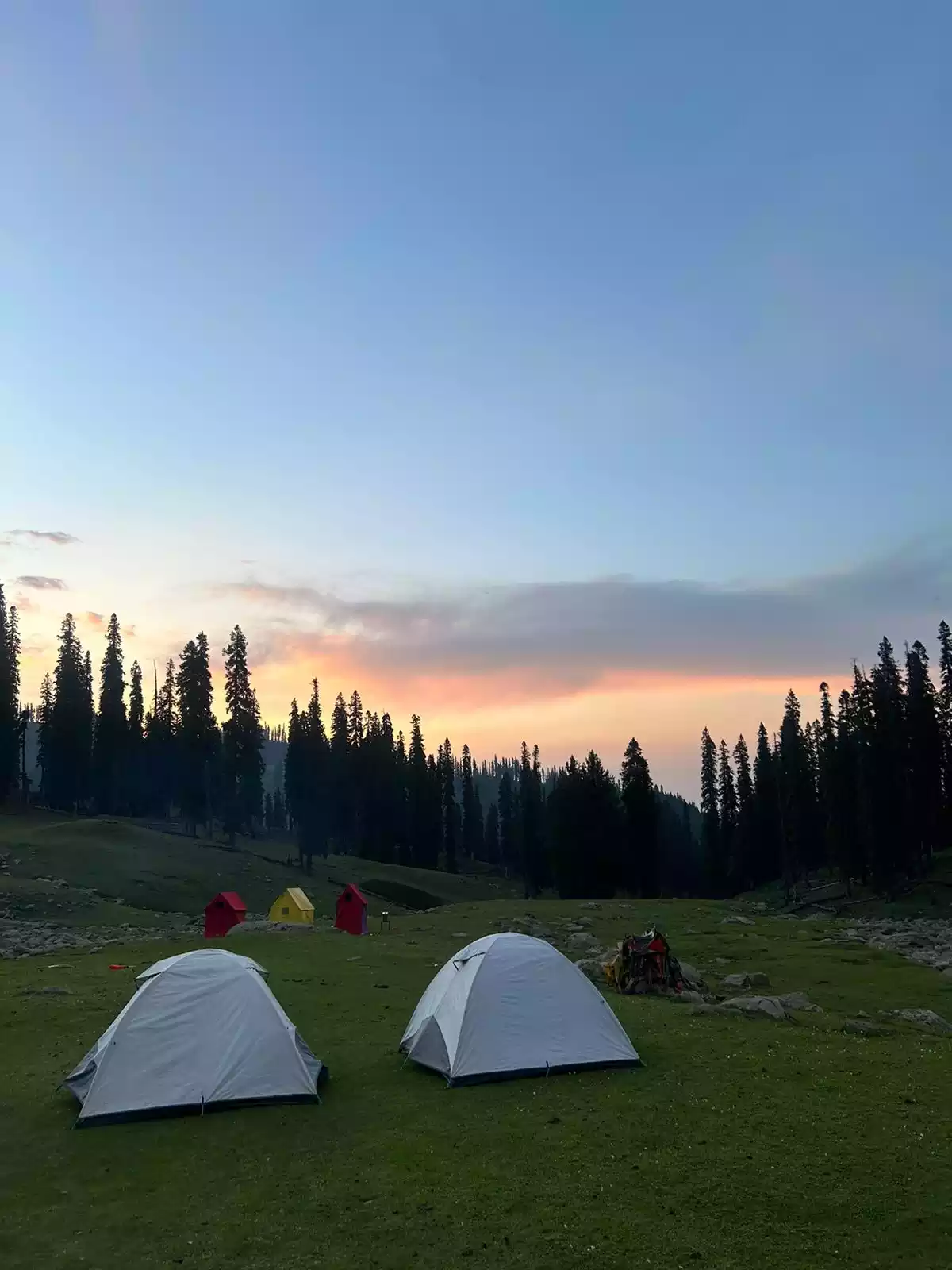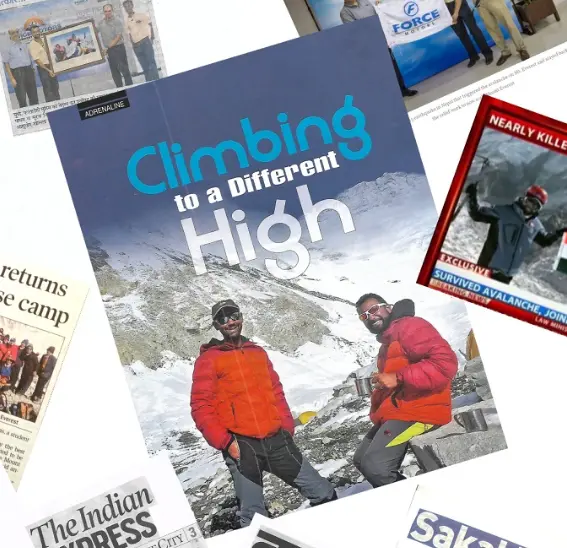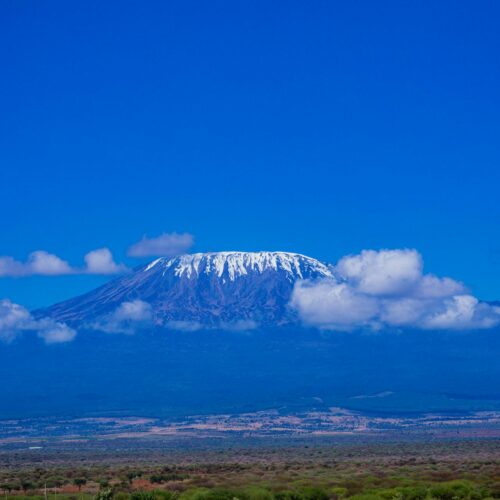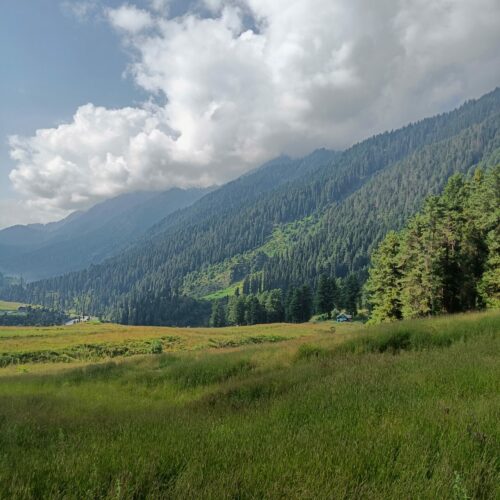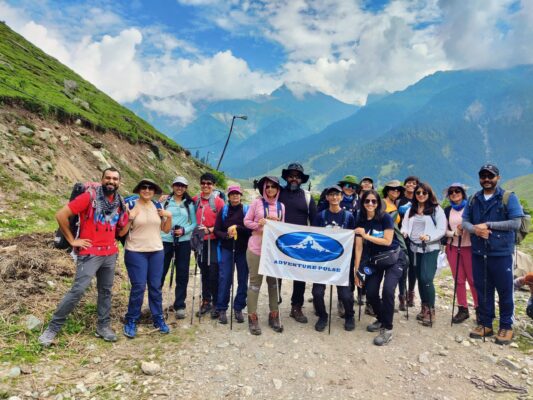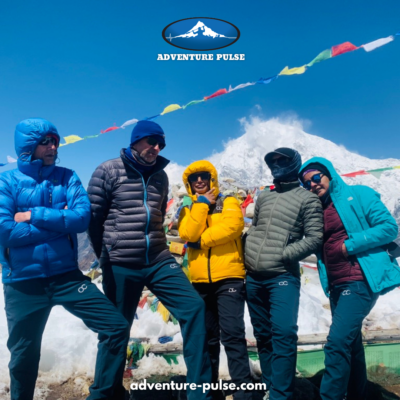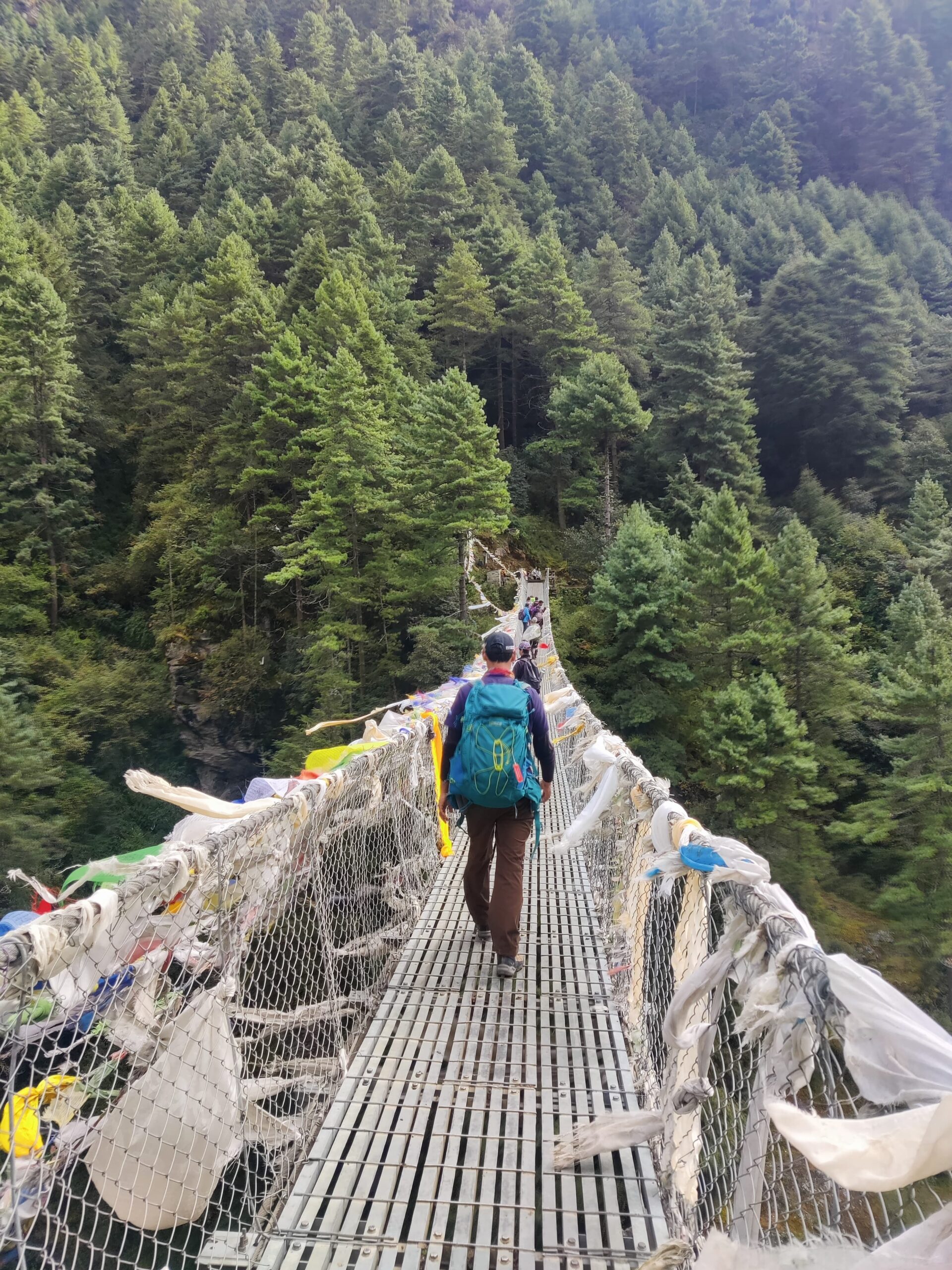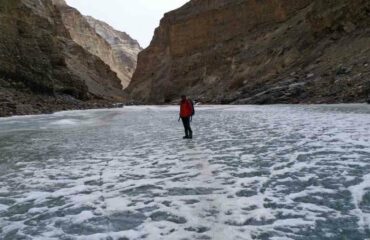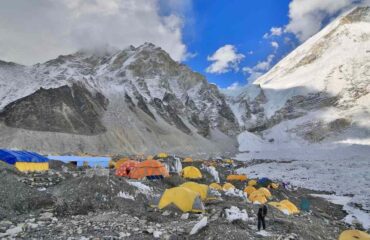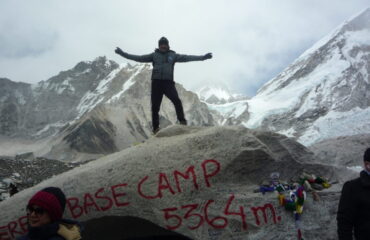
In the heart of winter, as cold icy winds blow through the Zanskar valley in Ladakh located at 4500 m , the people that inhabit this region, eagerly pray for the temperatures to drop even further, for it is only with the freezing cold comes their salvation and an access to the outside world One of India’s oldest indigenous populations, the Zanskaris, hail from an intriguing mix of Tibetan and Indo-European origin, and reside in small scattered villages, (the largest of these being the capital of Padum), located in the valley of the Zanskar River. Surviving largely on animal rearing and small-scale farming during the summers, the turn of winter sees this remote region of the Kargil District get completely cut off from the rest of the world.
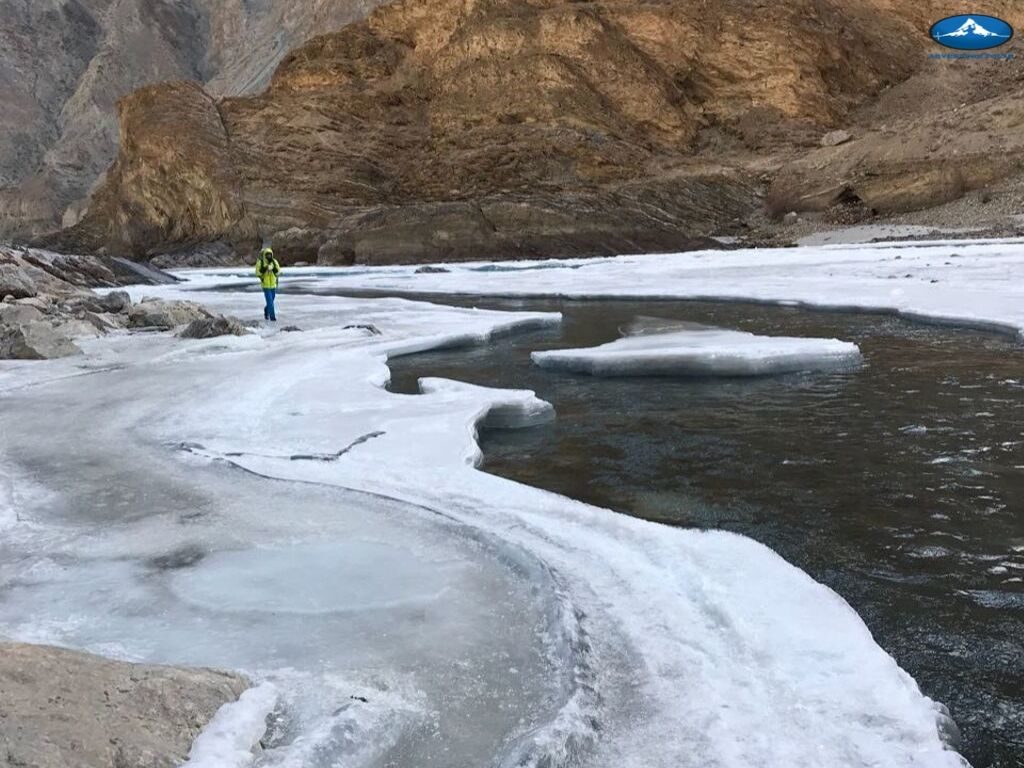
However, as the temperatures continue to plummet, an amazing phenomenon takes place; the river completely freezes over, creating an access route for the Zanskaris to the outside world that is every bit as incredible as it is unusual! This frozen river offers a lifeline for the Zanskaris to reach Leh, the capital of the Ladakh region, where goatskins, butter and copper utensils were traditionally exchanged for essential supplies necessary for them to survive the harsh winter months. This annual pilgrimage is presumed to be as old as the first recorded monasteries of Karsha and Phugtal, which date back to the 11th century. Shivering in frigid conditions, where daytime temperatures average -10 degrees Celsius, the men of this community would make the long 145 km arduous journey, dragging a sledge loaded with supplies across the ‘Chadar, (which translates to the word ‘sheet’) of Ice’, and would sleep in caves around an open fire during the night, when temperatures dropped to a bitter -30 degrees Celsius.
 With the route literally following the course of the river, passing under frozen waterfalls, through steep gorges, & the constant fear of the ice sheet giving way underfoot while the freezing waters of the Zanskar flowed just under the surface; this journey was undertaken with a tremendous amount of trepidation by the Zanskaris who embarked on it more out of necessity, to ensure their survival! For a thousand years, the outside world was completely oblivious to the existence of this annual odyssey, until television suddenly cast a spotlight on the region, giving way to a steady increase in tourism that shook the foundations of this community and began to threaten the very existence of the Chadar Trek.
With the route literally following the course of the river, passing under frozen waterfalls, through steep gorges, & the constant fear of the ice sheet giving way underfoot while the freezing waters of the Zanskar flowed just under the surface; this journey was undertaken with a tremendous amount of trepidation by the Zanskaris who embarked on it more out of necessity, to ensure their survival! For a thousand years, the outside world was completely oblivious to the existence of this annual odyssey, until television suddenly cast a spotlight on the region, giving way to a steady increase in tourism that shook the foundations of this community and began to threaten the very existence of the Chadar Trek.
The Modern World.
In 2011, the BBC network ran a documentary series titled, “Human Planet”, featuring the Chadar, shortly after which guidebooks and local Indian trekking agencies alike began to promote the destination and labelled this once ancient annual crossing as one of the ‘Must-Do Adventures’ in the world. A few years later, budget tour operators answered the increasing demand of backpackers, by providing access, logistics and fixed campsites along the route, opening it up to more than a thousand trekkers a day! The Chadar Trek was now well established in the annual cycle of adventure travel destinations in India, and while a few companies still held true to the camping code of ‘leave no trace’, leading small, ecologically sensitized groups, a large part of the tourism began to be funneled through budget operators who proceeded to launch a massive onslaught on this extremely fragile ecosystem.

While this sudden increase in popularity has resulted in an increase in tourism, economic development, and employment opportunities for this small community of people in the Zanskar Valley, the lack of controls and regulations to govern this sudden influx of tourism has created an incredible amount of destruction, resulting in a build up of human waste, trash and plastic, thus seriously polluting a once pristine environment. With large numbers of ill-informed and under-prepared travelers venturing into this extremely harsh environment, the number of accidents resulting in casualties as also fatalities increased substantially. The Leh District administration shocked by the bad publicity, were forced to step in and levy an ‘Environmental Conservation Fee’ as well as take more stringent action by banning some of these budget tour companies from running operations in the region. From this year (2019), it has now became mandatory for every trekker to spend a minimum of 72 hours in Leh as well as get a local medical check done in order to obtain clearance to venture forward onto the Chadar Trek.
The Changing Topography

On September 11th, 2019, the residents of Padum welcomed the arrival of the first vehicle on the new road being built via the Shinkula Pass at 16,600 ft, which has been under construction for the last 10 years. Though this has been a cause for immense celebration in the Zanskar Valley, only time will tell whether it will unwittingly spell ‘doom’ for the Zanskaris’ ancient & incredible cultural heritage. The impetus of this herculean project, despite the extremely hostile environment & several land disputes, was taken up by the 70 RCC (Road Construction Company) of the BRO (Border Roads Organisation), with a focus to increase connectivity in light of enhancing national security. However, over the last few years, the construction of this road has often resulted in an increase in falling debris and landslides, both of which have now begun to impact the very formation of the Chadar on the river, even during the peak of winter. In fact, in 2015, a massive landslide put a complete stop to the Chadar tourist season before it had even begun, disappointing thousands of trekkers who were eagerly looking forward to witnessing the frozen waterfalls of Nerak. The same year, CNN TRAVELER published an article in September titled “‘Chadar: Is this the end for the ‘world’s wildest trek?’”, which explored and elaborated on the accelerated rate of destruction of this incredible phenomenon.
Climate Change
Many tour operators have recently been attempting to attract trekkers & tourists alike, with a new (and rather disturbing) rallying cry imploring them to come witness the splendor of the Chadar Trek before it disappears forever (in a few years). I personally abhor such propaganda and the blatant commercialization of a tragically impending ecological disaster. With Greta Thunberg’s resounding speech and call to action at the UN Climate Summit on 23rd September 2019, the world seems to be waking up from its deep slumber and apathy towards global warming & environmental degradation. Being an explorer and an adventurer, I have had the rare opportunity to witness the delicate balance each region’s ecology maintains, and firmly believe in our ability to venture into such habitats to observe and study them without leaving a trail of environmental destruction and annihilation in our wake. I have had the chance to share these interactions with several others, with people ranging from 6 to 60 years of age, all of whom have joined me on my adventures, and have in turn joined me in cultivating a deep sense of respect and awe for nature in all her splendor.

Rather than promote the demise of this incredible ecosystem, we as leaders in the adventure travel industry must act as torch bearers, aiming to do everything in our power to preserve what we must, (as opposed to destroying what we can), and educate fellow trekkers and tourists on the fragility of this environment. In our quest for new experiences, it is imperative for us as people to be cognizant of the power we hold, not just as passive witnesses to the steady destruction of these incredible natural wonders, but also as active ambassadors for the preservation of life. Today we truly do stand at a crossroad, for without a conscious movement, ecological wonders such as the Chadar River of the Zanskar will only remain preserved as footnotes in the annals of history.

